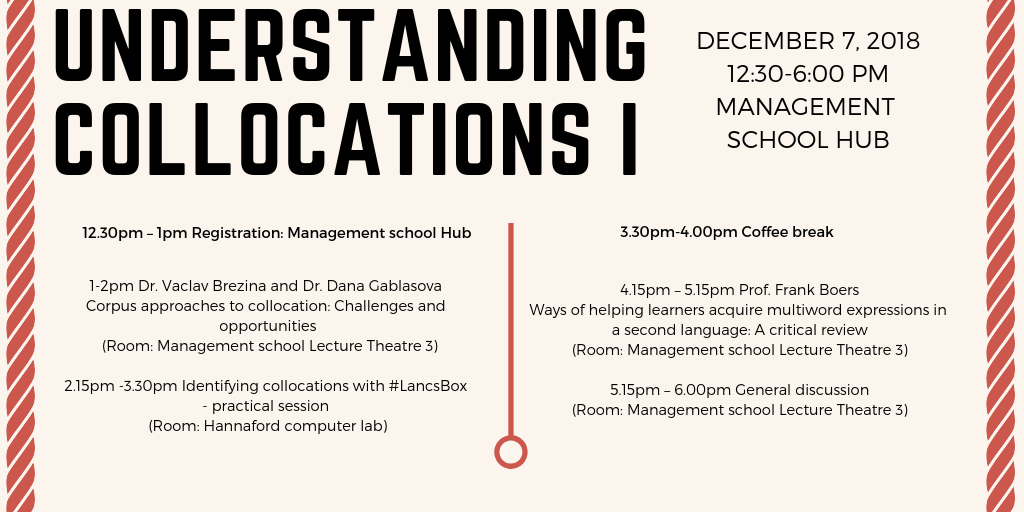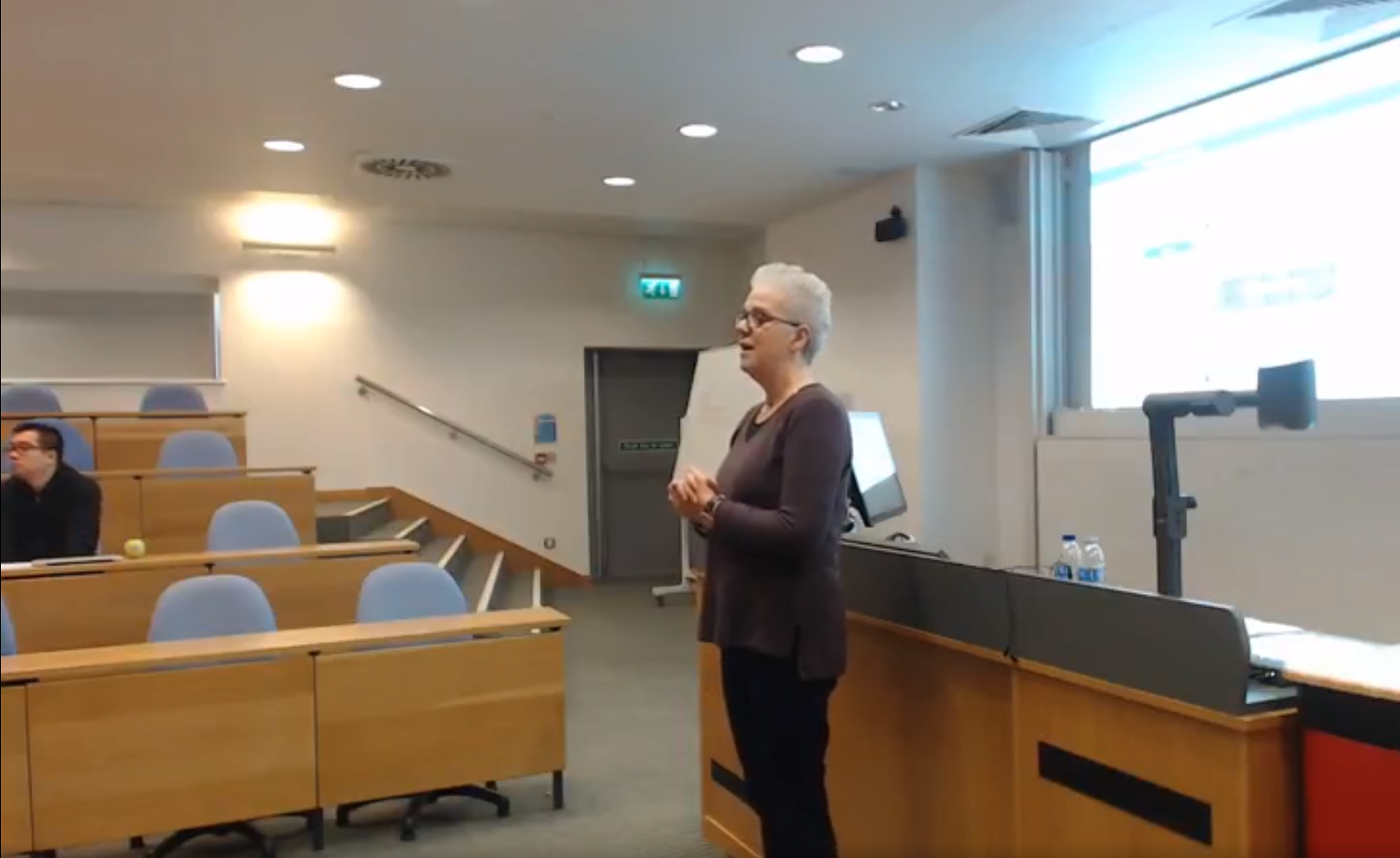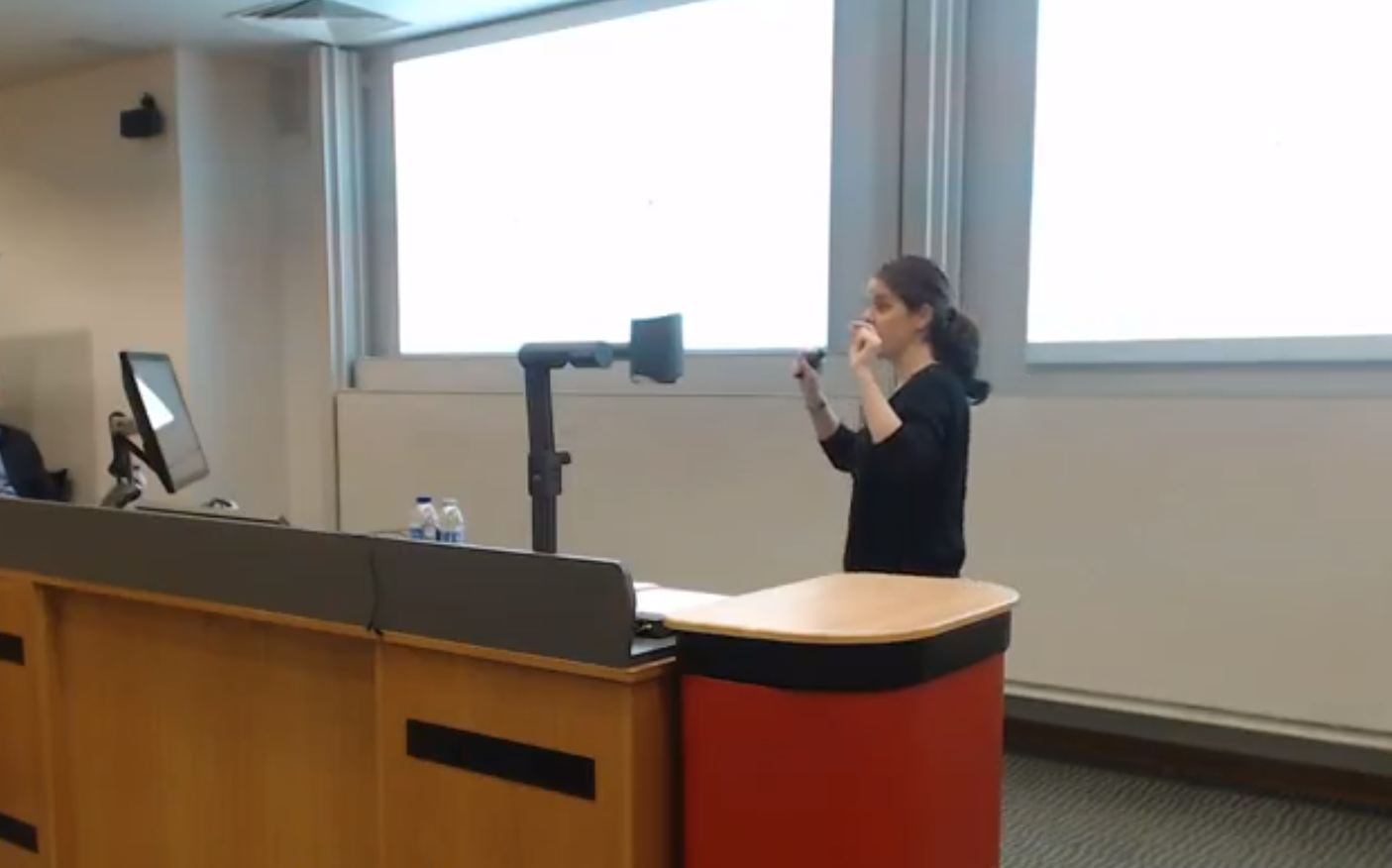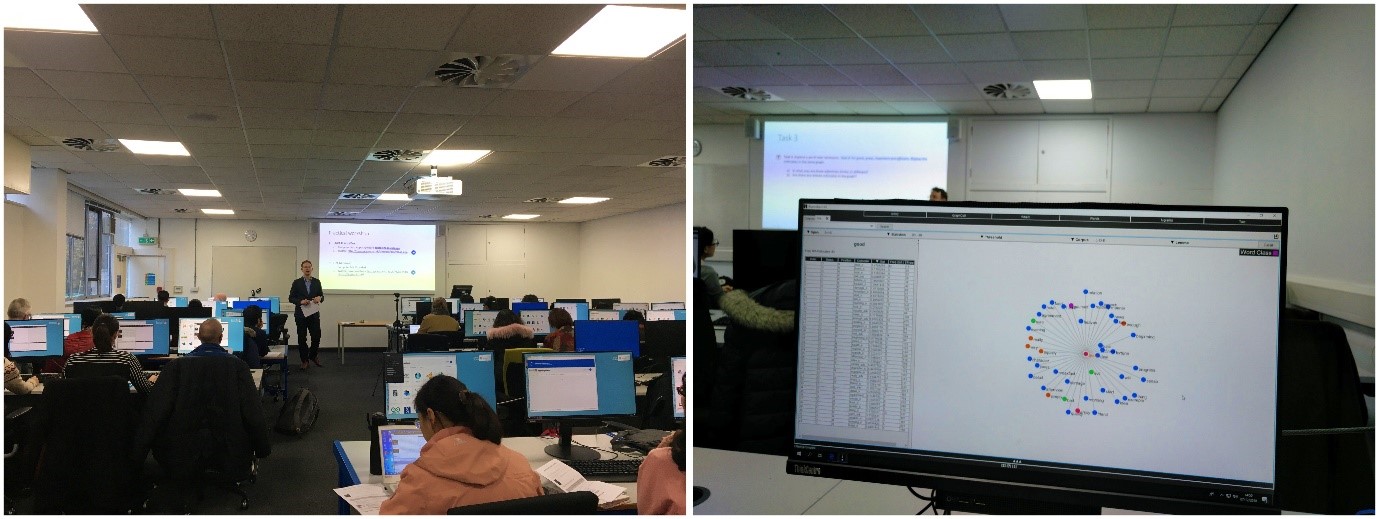On Friday 7th December 2018, members of the Trinity-Lancaster Corpus research group at Lancaster University organised the first symposium of a two-part series, ‘Understanding Collocations I’. On the day, researchers, graduate students and practitioners from the UK and beyond came together to learn more about multi-word expressions, their study using corpus methods and their pedagogical applications. This symposium was supported by an ESRC International Networking grant, and was hosted by the ESRC Centre for Corpus Approaches to Social Science (CASS).

After a meet and greet session over a tray of delicious sandwiches, the afternoon kicked off with a welcome by Prof. Elena Semino, the Director of CASS.

An introductory lecture was given by Dr. Vaclav Brezina and Dr. Dana Gablasova. First defining collocations as a construct and giving an overview of the different approaches and tools that can be employed to study them from a corpus linguistics perspective, Dr. Vaclav Brezina and Dr. Dana Gablasova then explained the challenges and opportunities brought about by research in this area, and rounded off this first talk by discussing how those can be addressed in the future.

The second session of the day, also led by Dr. Vaclav Brezina, put theory into practice by giving participants an opportunity to search for and analyse collocations in corpus data using #LancsBox. #LancsBox is a free tool developed at Lancaster University and aiming at making the processing of new and existing corpora more user-friendly. Our participants got their hands dirty exploring the different features of the LOB corpus using #LancsBox and learning new data visualisation methods, manipulating several association measures to create firework-like representations of collocation networks.

Photo credit: Follow @zoebroisson and Follow @RaquelLiceras
Enjoying #UnderstandingCollocations and learning Collocation graphs and networks in #LancsBox! #LancasterCollocations pic.twitter.com/dMahhIltdZ
— Dr Raquel Liceras-Garrido (@RaquelLiceras) December 7, 2018
A coffee and a choc-chip cookie later, the third and last session of the day began. Prof. Frank Boers, our invited speaker from Western University, Ontario, Canada, gave a lecture on the applications of the study of collocations to language teaching and learning. Stressing the role played by multi-word expressions such as collocations in L2 acquisition, Prof. Frank Boers drew on his long-standing experience as an applied linguist, teacher and teacher trainer to critically review the ways in which collocations are presented in current pedagogical materials (and presented the do’s and don’ts of textbook exercises).

Prof. Frank Boers is talking about the ways to help learners with the acquisition of multiword expressions #LancasterCollocations @CorpusSocialSci pic.twitter.com/NgNDAvclcO
— Tanjun Liu (@tanjun_liu) December 7, 2018
Photo credit: Follow @tanjun_liu
Finally, our local, online and international visitors all the way from China, Brazil, Belgium, Indonesia and The Netherlands, amongst others, made for a diverse crowd, which led to an engaging final discussion session to close the day.
We express our many thanks to the presenters, organisers and participants for joining this first edition of Understanding Collocations and making it such an enjoyable and enriching experience for all. The videos of the presentations given during the symposium are available down below.
Videos
Part I: Introduction by Prof. Elena Semino and lecture by Dr. Vaclav Brezina and Dr. Dana Gablasova
Understanding Collocations I: Seminar https://t.co/n44AXZ49ea
— CASS (@CorpusSocialSci) December 7, 2018
Part II: Practical session
Understanding Collocations I: Seminar https://t.co/K24KojINc9
— CASS (@CorpusSocialSci) December 7, 2018
Understanding Collocations I: Practical Session https://t.co/dowfDt6J3n
— CASS (@CorpusSocialSci) December 7, 2018
Part III: Lecture by Prof. Frank Boers
Understanding Collocations I: Prof. Boers https://t.co/DMJHVo0SBb
— CASS (@CorpusSocialSci) December 7, 2018
